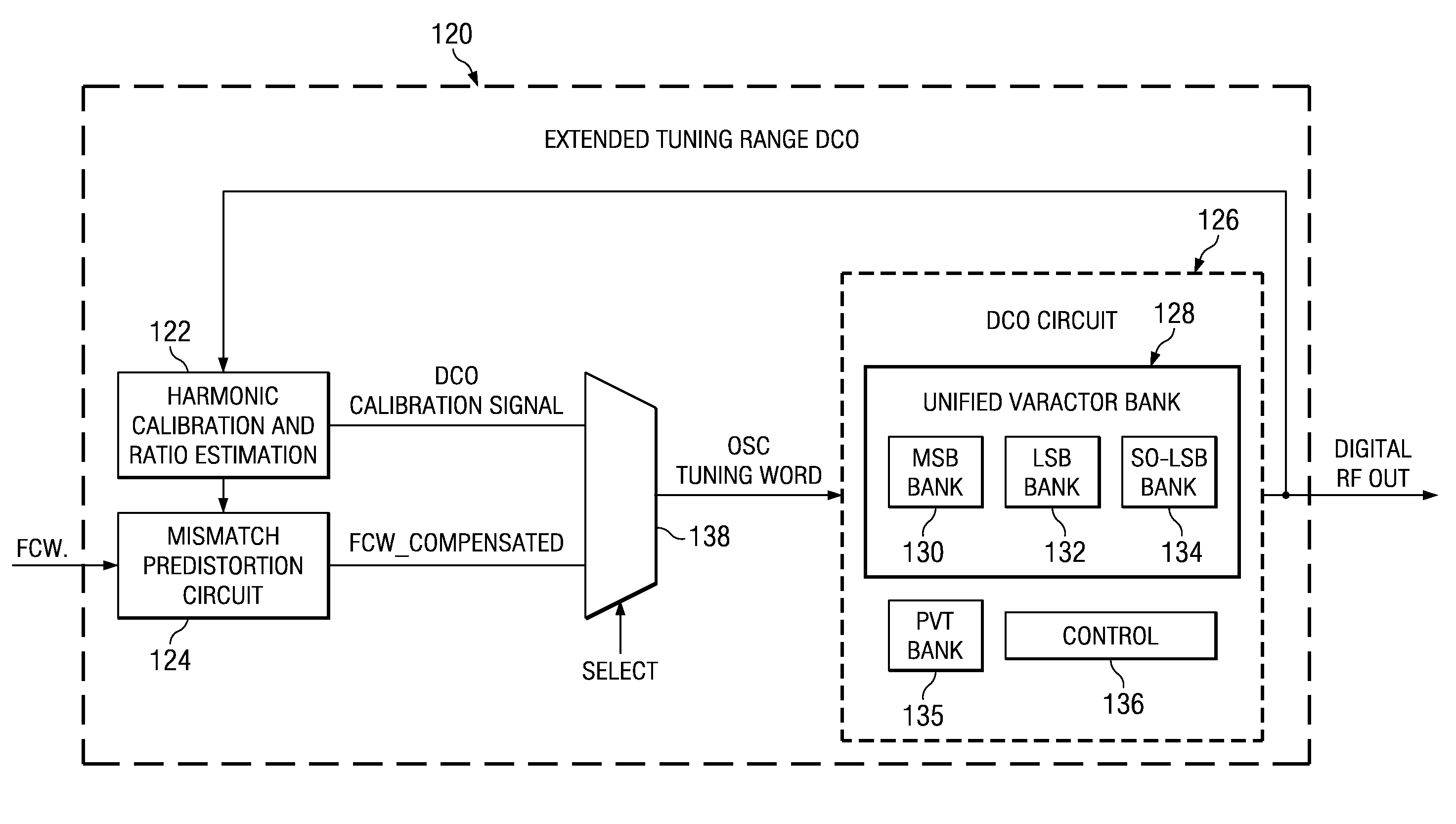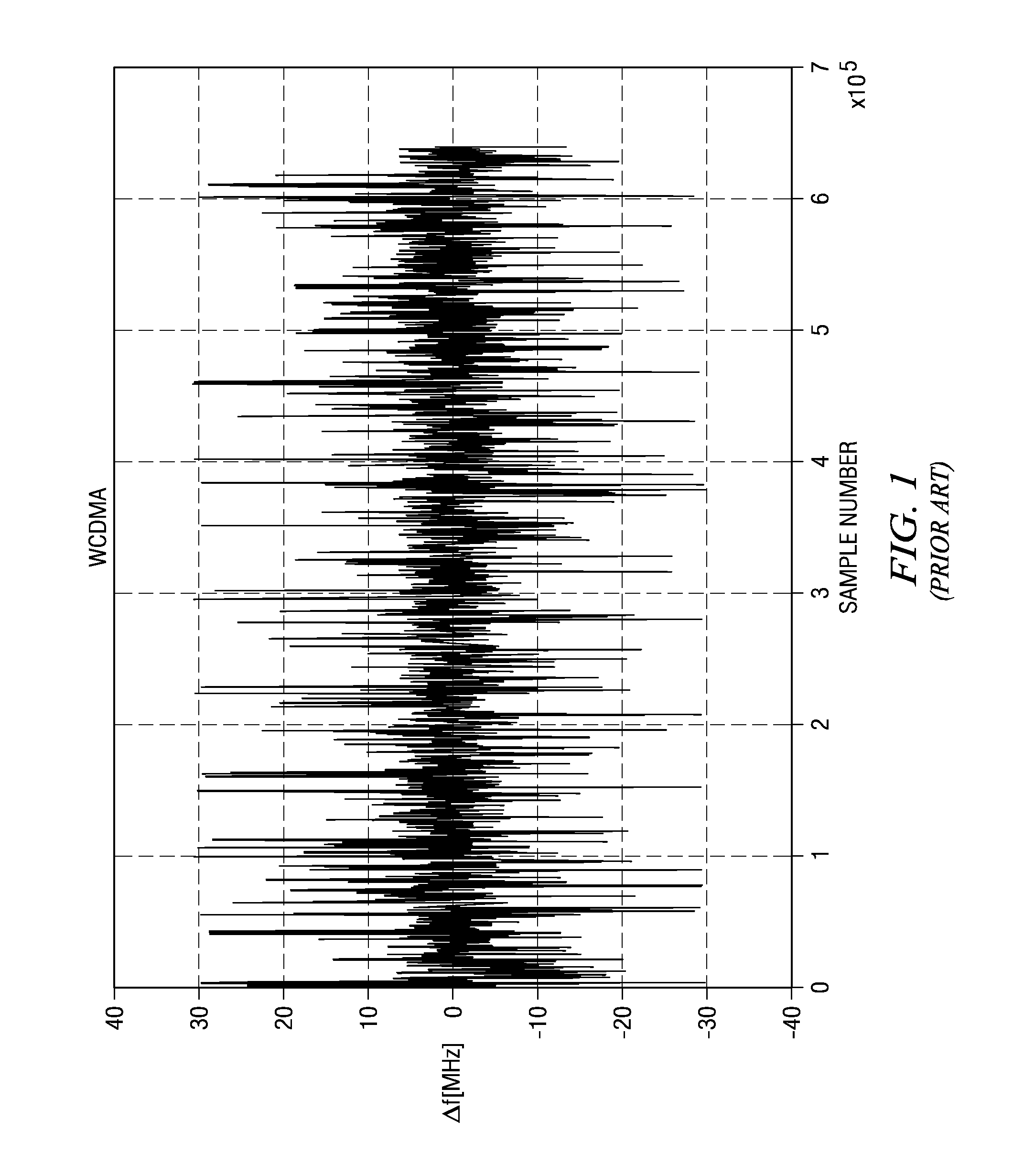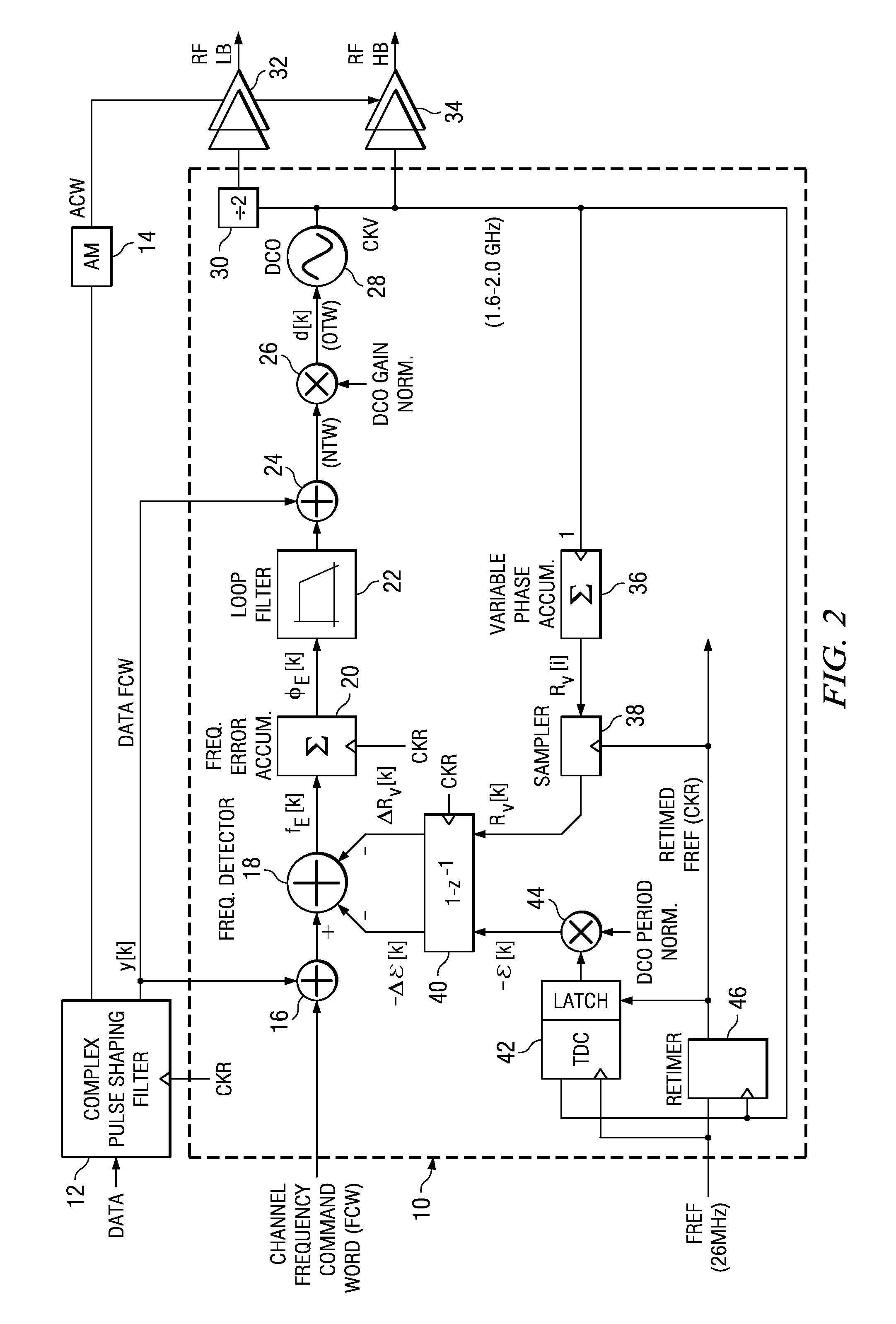Frequency tuning range extension and modulation resolution enhancement of a digitally controlled oscillator
a digital control and oscillator technology, applied in the field of data communication, can solve the problems of affecting the accuracy of modeling, and requiring several expensive design and fabrication iterations, so as to improve the modulation resolution of an rf, extend the frequency tuning range, and widen the modulation tuning range
- Summary
- Abstract
- Description
- Claims
- Application Information
AI Technical Summary
Benefits of technology
Problems solved by technology
Method used
Image
Examples
Embodiment Construction
Notation Used Throughout
[0040]The following notation is used throughout this document.
[0041]
TermDefinitionABAcquisition BankACLRAdjacent Channel Leakage RatioADPLLAll Digital Phase Locked LoopASICApplication Specific Integrated CircuitCKRRetimed Reference ClockCKVVariable Oscillator ClockCMOSComplementary Metal Oxide SemiconductorDCODigitally Controlled OscillatorDCSDigital Cellular SystemDNLDifferential Non-LinearityDRPDigital RF Processor or Digital Radio ProcessorEDGEEnhanced Data rates for GSM EvolutionEVMError Vector MagnitudeFCWFrequency Command WordFPGAField Programmable Gate ArrayFREFFrequency ReferenceGGEGSM, GPRS and EDGEGPRSGeneral Packet Radio ServiceGSMGlobal System for Mobile CommunicationsHBHigh BandHDLHardware Description LanguageICIntegrated CircuitIEEEInstitute of Electrical and Electronic EngineersIIRInfinite Impulse ResponseINLIntegral Non-LinearityLBLow BandLSBLeast Significant BitMIMMetal Insulator MetalMOSCAPMetal Oxide Semiconductor CapacitorMSBMost Significa...
PUM
 Login to View More
Login to View More Abstract
Description
Claims
Application Information
 Login to View More
Login to View More - R&D
- Intellectual Property
- Life Sciences
- Materials
- Tech Scout
- Unparalleled Data Quality
- Higher Quality Content
- 60% Fewer Hallucinations
Browse by: Latest US Patents, China's latest patents, Technical Efficacy Thesaurus, Application Domain, Technology Topic, Popular Technical Reports.
© 2025 PatSnap. All rights reserved.Legal|Privacy policy|Modern Slavery Act Transparency Statement|Sitemap|About US| Contact US: help@patsnap.com



